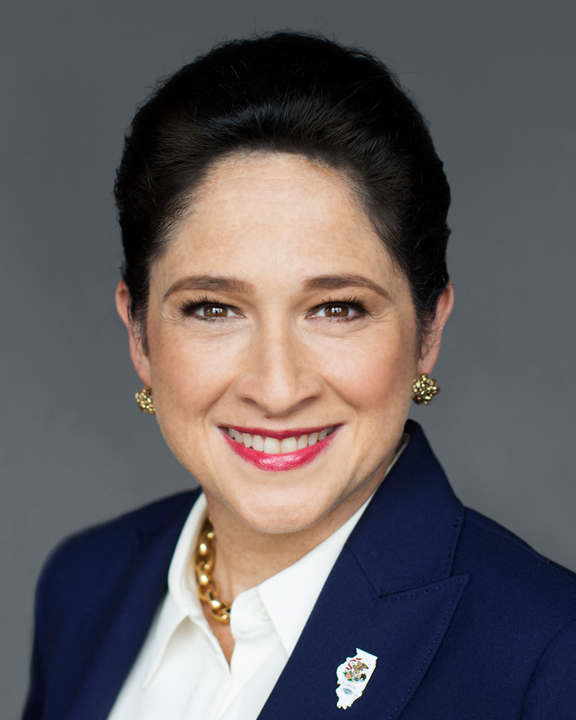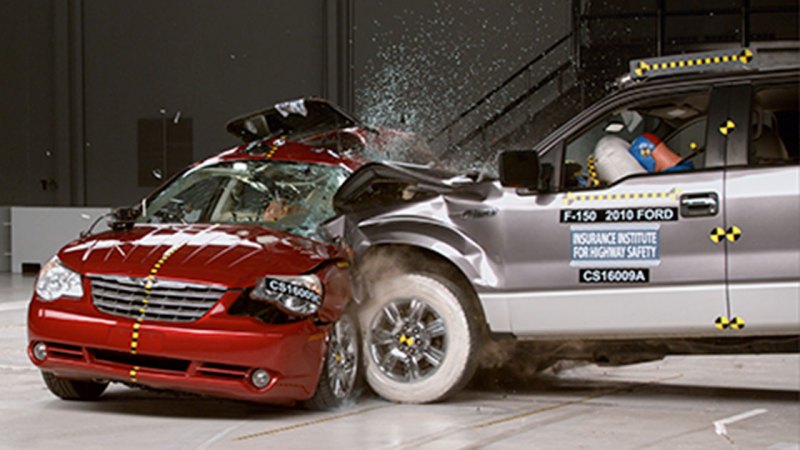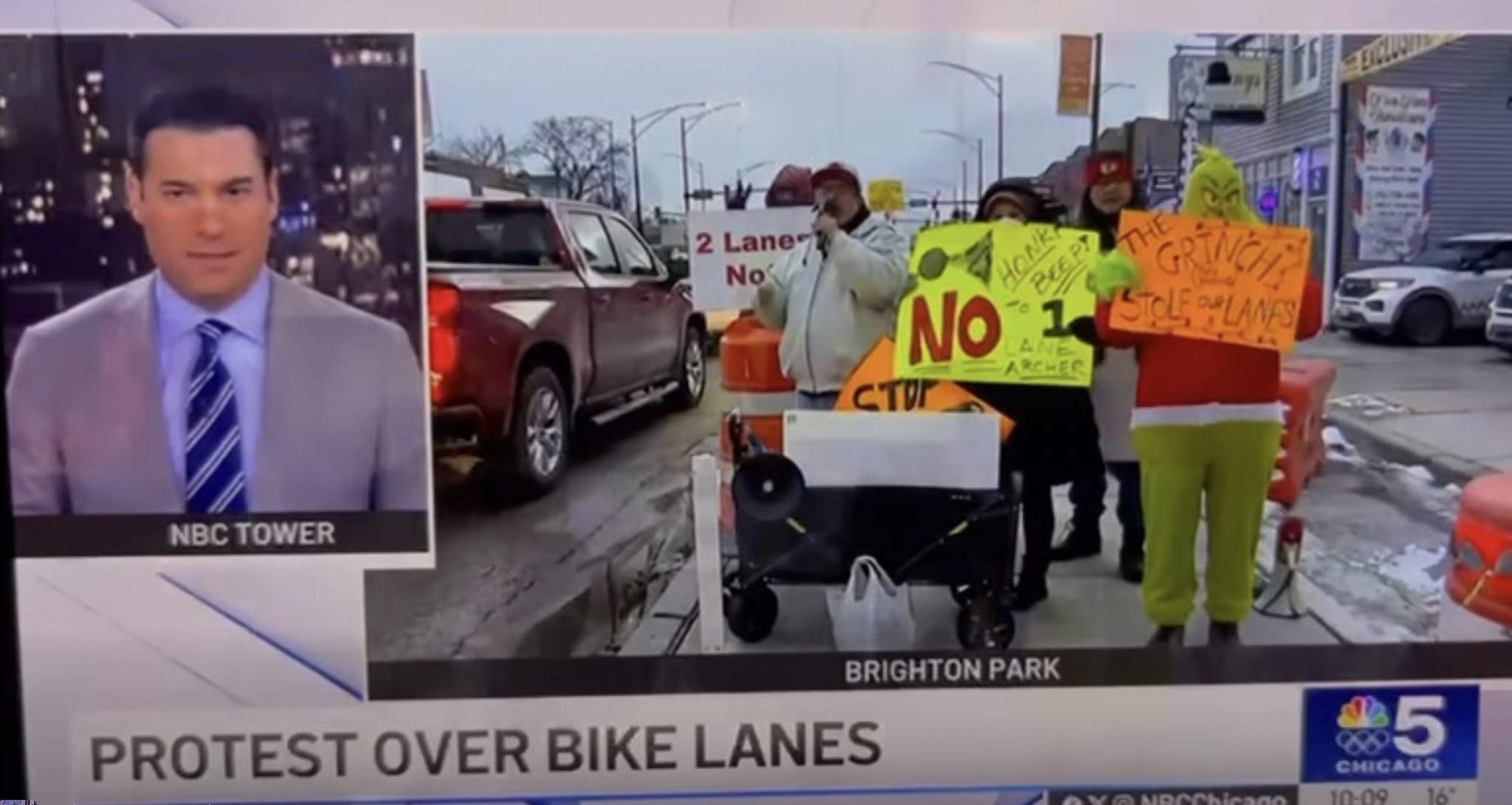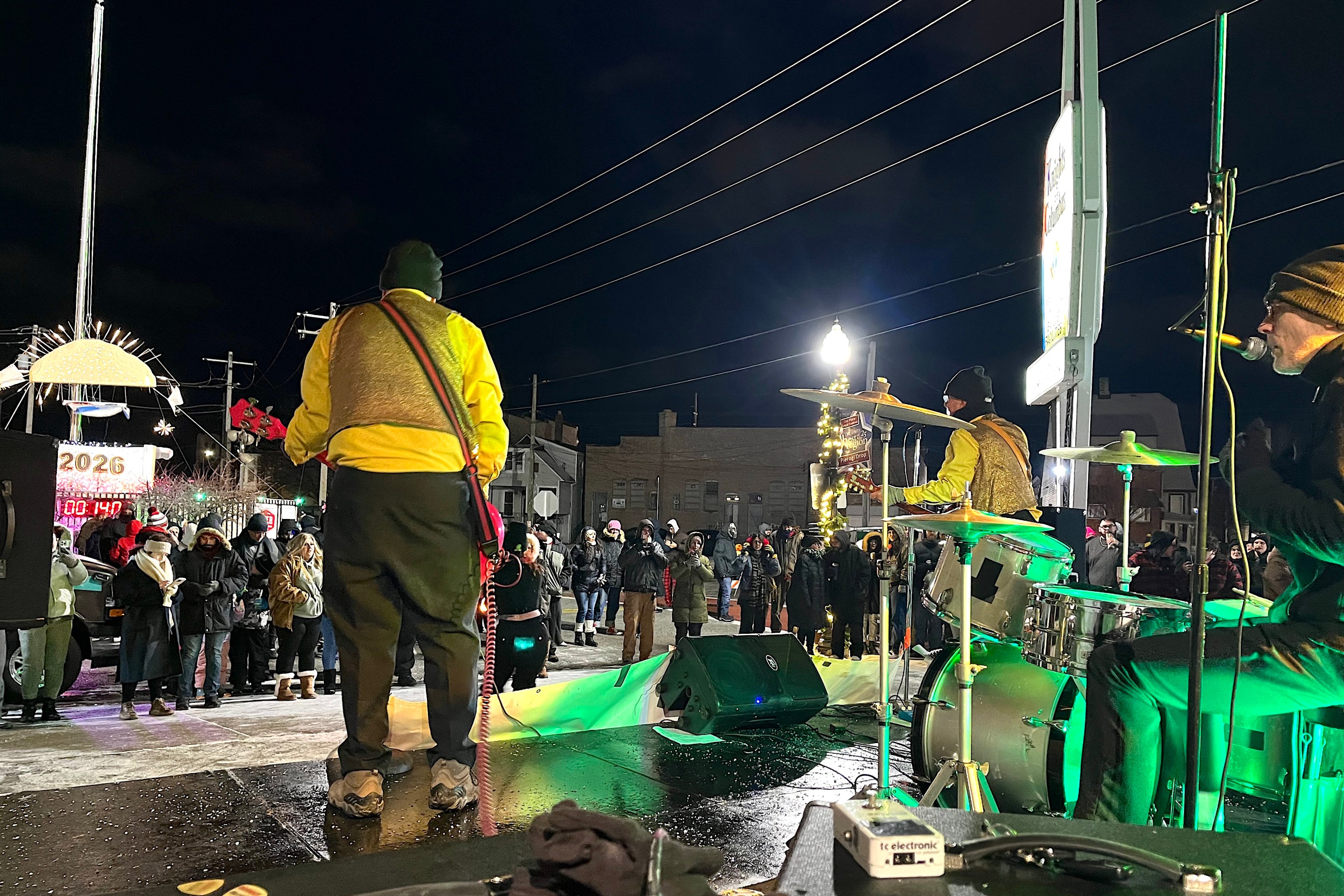I've been a fan of Illinois Comptroller Susana Mendoza since the 2017 incident when she witnessed Chicago Machine operative and convicted tollway embezzler John "Quarters" Boyle blow a red in his truck, hit a row of parked cars, and flee the scene. Mendoza chased him down on her bicycle and filmed him, which was pretty badass.
On the other hand, she's no stranger to corrupt politicians herself. Indicted and disgraced Southwest Side alderman Ed Burke, who has somehow retained his seat in the City Council, hosted Mendoza's wedding at his home and entertained the guests by playing piano, and his wife Judge Anne Burke officiated.

Following an unsuccessful run for Chicago mayor in the last election, Mendoza is currently in reformer mode. Unfortunately, her current crusade includes urging suburban municipalities to consider shutting down their red light cameras, which would likely result in more lives lost to traffic crashes.
As reported by the Chicago Sun-Times' Robert Herguth and Tina Sfondeles, since 2012, Mendoza's office has helped towns collect outstanding red-light fines from motorists by garnishing their state income tax returns. The municipalities have gotten most of the ticket money, often a $100 fine, with the Comptroller's office keeping a $20 cut. About $11 million was collected this way for 60 Chicago suburbs in 2019.
But in the face of pay-to-play allegations involving red light camera vendor SafeSpeed, other state officials, and suburban staffers, Mendoza said the Comptroller's office will no longer help collect the ticket fees. “The comptroller’s office isn’t going to be in the business” of helping “a program that’s broken and morally corrupt,” Mendoza said in an interview with the Sun-Times.
There's an ongoing federal corruption investigation involving a complex web of alleged wrongdoing by multiple players -- I recommend reading the Sun-Times article for the full details. For example, in 2017 State Senator Martin Sandoval, who received major campaign donations from SafeSpeed, advocated for installing their red light cams in Oakbrook Terrace. His home was raided by the feds in September, with SafeSpeed on the warrant. Agents also recovered $60,000 from the Oakbrook Terrace Mayor's house. Red-light-related dealings by officials from Summit, McCook, Worth Township, and Alsip are also under investigation. In some cases suburban staffers have moonlighted as sales reps for SafeSpeed, receiving a commission on ticket revenue from communities where they helped get the company contracts.
Even as a traffic cam advocate, I'll be the first to acknowledge that this situation sounds like a mess. It's crucial for the feds to get to the bottom of it and hold the players accountable for any corruption they uncover.
But Mendoza, who herself received $16,500 in campaign donations from SafeSpeed in 2018 and 2019, is throwing out the baby with the bath water, saying that the suburbs should consider abolishing their programs altogether. “I don’t think it’s good public policy and I think it’s time it ends,” she told the Sun-Times, calling it “a system open to corruption.” She also argued that the fees disproportionately impact low-income residents.
While corruption in red light camera programs is distressing and needs to be rooted out, the fact remains that well-administered RLC systems save lives, and municipalities that remove the cams expose their residents to a higher risk of being injured or killed by red light runners. As Angie Schmitt reported in Streetsblog USA last year, an Insurance Institute for Highway Safety study found that 811 people were killed in crashes caused by red light runners nationwide in 2016, an increase of 17 percent compared to the previous four-year average. The rise in red light-running fatalities coincided with a drop in the number of cities using camera enforcement to deter red-light running. Between 2012 and 2016, the number of red light cameras in operation fell 21 percent, according to IIHS.
IIHS didn’t attribute all of the additional deaths to the removal of cameras, but their research found it played a role. A 2016 IIHS study found that the fatal red-light running crash rate in cities that took down their cameras rose by 30 percent relative to similar cities that had not. In cities that had eliminated camera enforcement, the overall fatal crash rate at intersections with stoplights was 16 percent higher than in cities where the programs were maintained.
However, IIHS acknowledged that poorly managed RLC systems undermine public confidence that the cameras are really there to improve safety, rather than just generate revenue. They made the following recommendations to maximize the safety benefits, while getting rid of incentives for concessionaires to rig the system to maximize profits.
1. Put the cameras at the most dangerous intersections
2. Target the most dangerous violations, i.e. blowing straight through lights
3. Use standard signal timing
4. Allocate the revenue to street safety programs
5. Encourage public input to help design the program and oversee changes
6. Be transparent -- collect and publish data about how the program is functioning
7. Don’t create bad incentives for the vendor by paying them by the number of tickets issued
8. Don’t set up hair-trigger cameras
9. Allow for due process by having an easily accessible process for contesting tickets
10. Sliding-scale fines and alternatives to payment for low-income drivers





